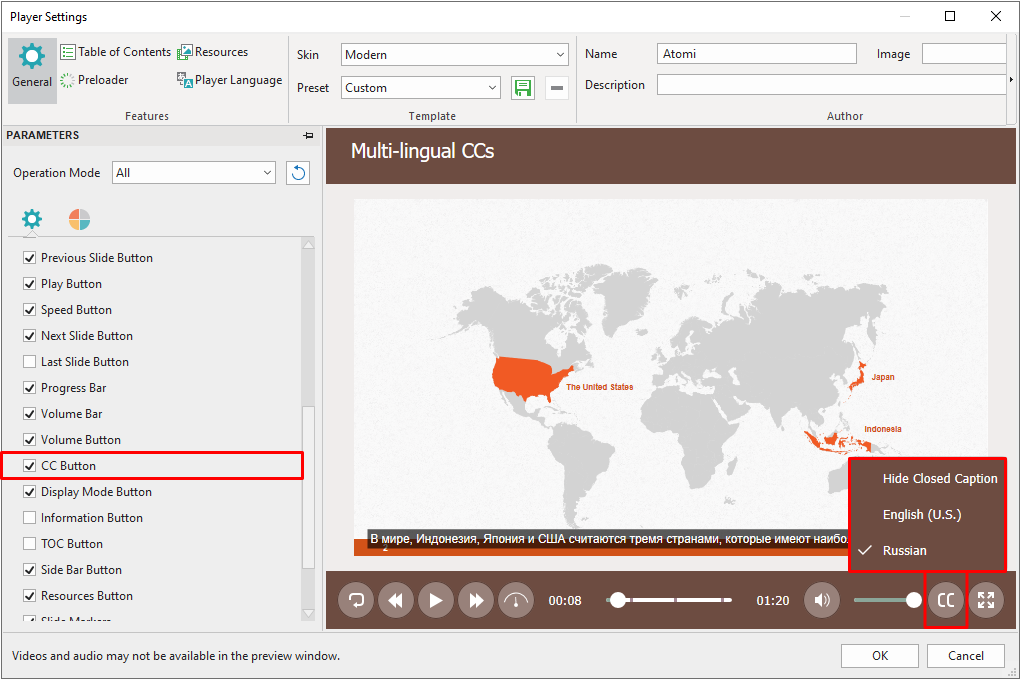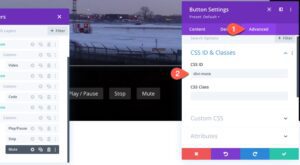

- #CUSTOMIZE HTML5 VIDEO PLAYER CONTROLS MP4#
- #CUSTOMIZE HTML5 VIDEO PLAYER CONTROLS ANDROID#
- #CUSTOMIZE HTML5 VIDEO PLAYER CONTROLS CODE#
- #CUSTOMIZE HTML5 VIDEO PLAYER CONTROLS SERIES#
MP4 files are the most widely accepted format, and other formats like WebM and Ogg are supported in Chrome, Firefox, and Opera. However, not all browsers support the same video file format.

The element is supported by all modern browsers. Your browser does not support the video element.
#CUSTOMIZE HTML5 VIDEO PLAYER CONTROLS CODE#
To embed a video file, just add this code snippet and change the src to the path of your video file: It may contain one or more video sources, represented using the src attribute or the source element. The HTML element is used to embed video in web documents.
#CUSTOMIZE HTML5 VIDEO PLAYER CONTROLS ANDROID#
This makes it possible to have videos play on pages that are designed for mobile devices, as plugins like Adobe Flash Player don't work on Android or iOS. With the introduction of HTML5, you can now place videos directly into the page itself. Here are the notes on my findings, first using a keyboard alone and then a screen reader for the platform.Before HTML5, in order to have a video play on a webpage, you would need to use a plugin like Adobe Flash Player. For our case, needing to support multiple platforms, it made sense to only test Plyr as a non-native solution. I did not test either YouTube or Vimeo embedded players on their own. Others did not trap keyboard focus in full-screen mode, leading to a similar situation as an inaccessible modal window allowing content to be accessed "behind" the window. One player in particular featured very awkward keyboard support where controls were visible on the screen but could not be focused. Some lose focus when the video controls receive focus then fade away, forcing the user to re-position themselves to adjust playback. There were a lot of inconsistencies across the board as far as keyboard and screen reader support. This is my opinion stemming from experience, but I found most to have poor keyboard and screen reader support, which may lead to frustrated users. In case you don’t make it all the way to the bottom, I feel, based on the results of testing each player (and comparing to my own Accessible Video Player project), that relying on native video players should be used with caution.

The results are pretty much what I expected. This included various operating systems, browsers, and screen readers.
#CUSTOMIZE HTML5 VIDEO PLAYER CONTROLS SERIES#
To answer this question I set out to conduct a series of tests for native video player accessibility. "How is Plyr more accessible than native players? Isn't HTML video accessible already?" Some folks asked for more details on why we decided to go with Plyr as opposed to the native HTML video player. Other custom accessible video players were considered, but did not support all the features we required.

Video content, along with product imagery, will help to showcase product details in a dynamic fashion.įor the video player we decided to ship Plyr as the default. Anything that gets added must be tested for accessibility pre-launch.Ī new feature Shopify is starting to roll out is video for products. Particularly with our Debut theme (running here on my blog and store), which I’ve been working with our Themes team to ensure a highly accessible experience for stores running this theme. Part of my day-to-day is working with teams to guide and test solutions for accessibility.


 0 kommentar(er)
0 kommentar(er)
